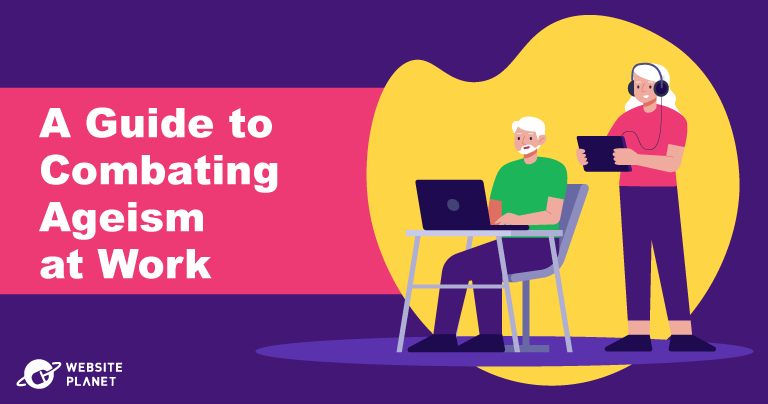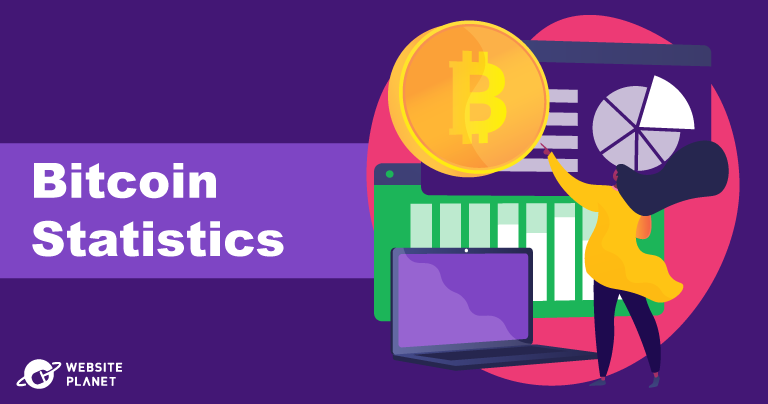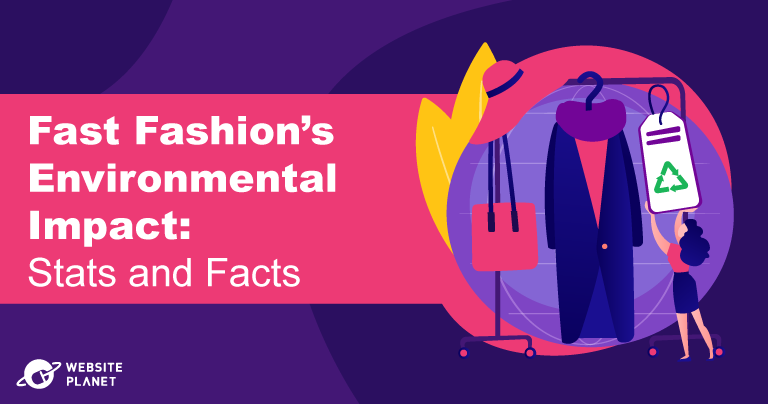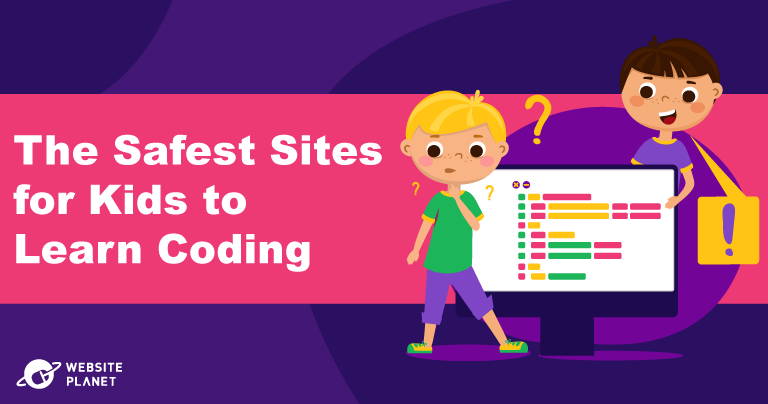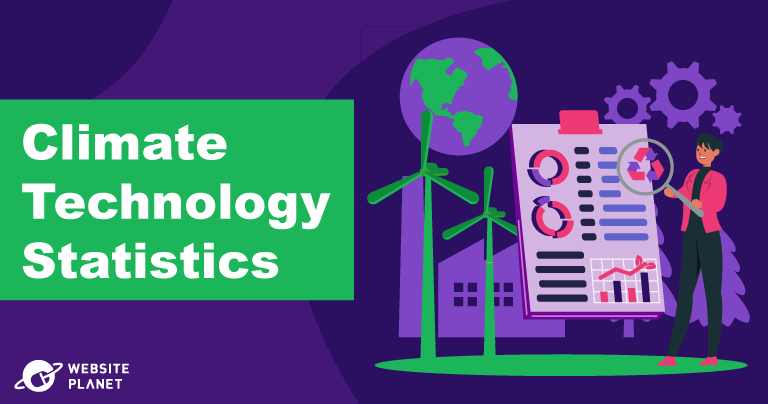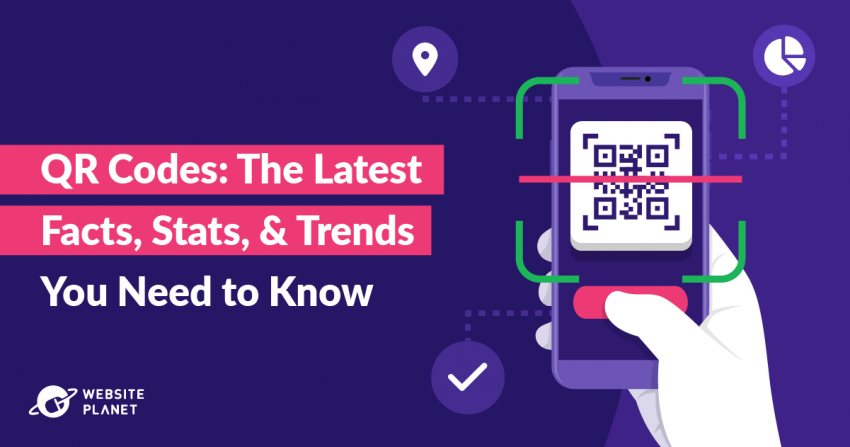Inside this Article
Understanding Ageism in the Workplace
Ageism in the workplace occurs when stereotypes, biases, or policies unfairly limit opportunities based on age. It affects workers across industries, impacting career growth, mental health, and collaboration. Examining its forms, legal protections, and exceptions can help organizations and employees address its impact and foster fairness in the workplace.What Is Ageism?
Ageism is discrimination or prejudice against individuals based on their age. Dr. Robert N. Butler coined the term in 1969 and, in the decades it’s been studied, ageism has been found to affect people of all ages but to often disproportionately impact older workers. It’s one of the most widely tolerated forms of discrimination. Ageism stems from:- Stereotypes: Generalized beliefs about certain age groups, such as assuming older workers are less adaptable or that young workers lack experience.
- Prejudice: Negative attitudes based on age, creating workplace barriers and biases.
- Discrimination: Actions or policies that disadvantage individuals due to their age, like excluding them from promotions or training opportunities.
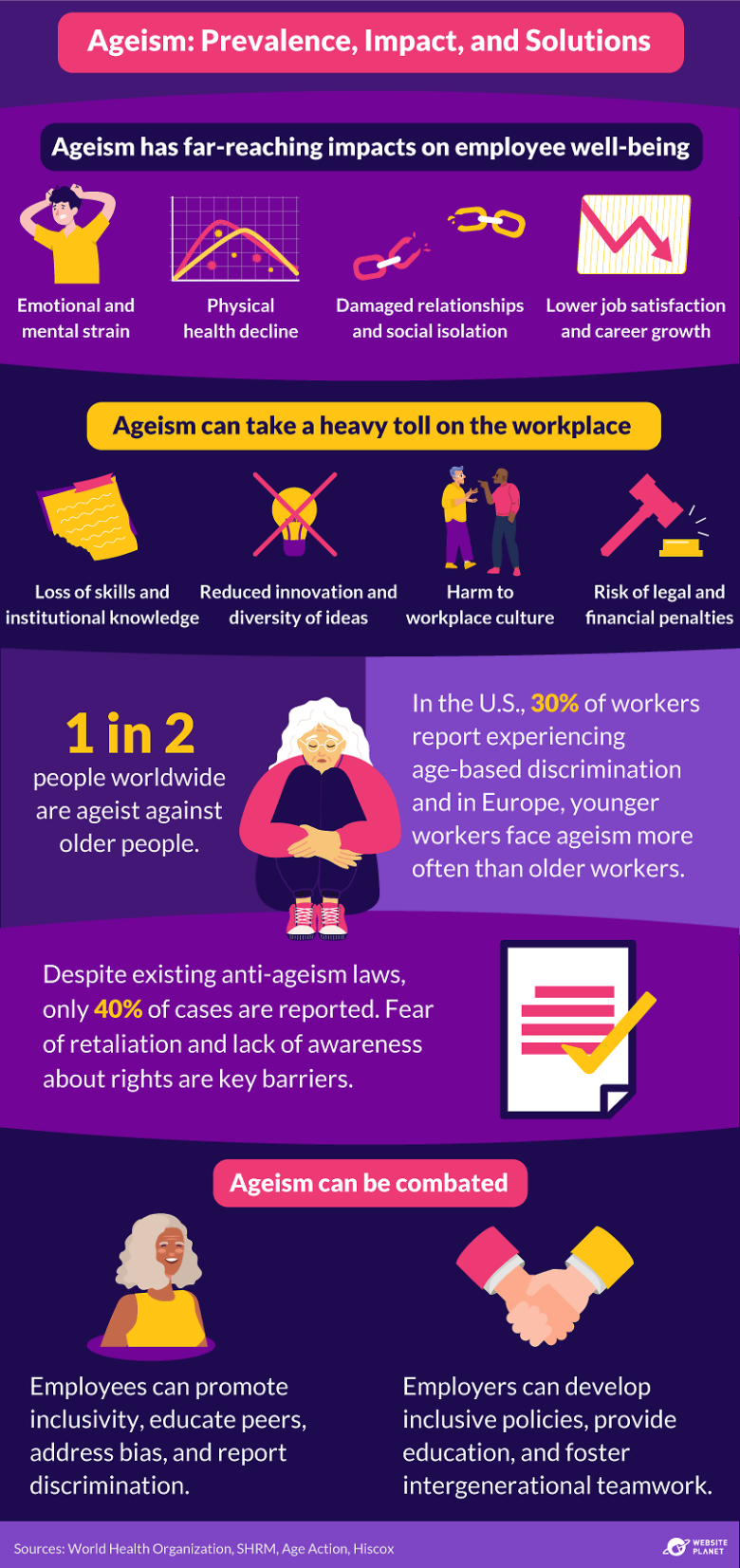
Prevalence of Ageism
Globally, 1 in 2 people are ageist against older adults and, in the U.S., 30% of workers have faced unfair treatment based on their age, with 72% considering leaving their jobs. Despite its reach, only 40% of cases are reported, often due to fear of retaliation or lack of knowledge about their rights. Certain industries are more affected:- Technology: Technology has some of the worst age biases, with older workers often overlooked for promotions. A study by SHRM found that 49% of managers perceive older workers as less competent with technology.
- Manual labor: Employers assume that older workers lack physical capability, creating disadvantages in industries like construction and manufacturing.
- Media: This industry favors younger talent, often sidelining experienced older employees.
Types of Workplace Ageism
Ageism in the workplace manifests in a variety of ways, affecting both younger and older workers. Below we discuss the main types of ageism and key examples of how these biases impact career opportunities, workplace culture, and employee morale.1. Direct discrimination
Direct discrimination occurs when individuals are explicitly treated unfavorably due to their age. This type of discrimination is often seen in hiring, promotions, and pay practices. For example:- Promotional bias: Older workers may be seen as “too old” to adapt, while younger workers are dismissed as “too inexperienced.” For instance, in the tech industry, promotions decline significantly after age 36, despite older workers’ strong performance records. Similarly, a pharmaceutical company in the U.S. was found to have intentionally excluded older workers from sales roles, violating federal law.
- Pay disparities: Workers may be paid less because of their age. For example, a young worker in Northern Ireland was fired to avoid paying a legally mandated wage increase.
2. Indirect discrimination
Indirect discrimination occurs when policies or practices appear neutral but unintentionally disadvantage certain age groups. This can happen when organizations treat all employees the same without recognizing the unique aspects of specific age groups. Examples include:- Training opportunities: Younger employees might receive more advanced training opportunities, while older employees are excluded based on assumptions about their ability to learn new skills. A survey by CITB of 412 construction employers and 105 employees in the UK found that 87% of firms believed it wasn’t necessary to invest in advanced IT skills for workers over 50, despite many of them having leadership roles.
- Workplace policies: A rigid one-size-fits-all policy (like fixed working hours) could disadvantage certain age groups, who may require flexibility for health or caregiving responsibilities.
3. Institutional Ageism
Institutional ageism occurs when policies or practices intentionally discriminate against certain age groups. Unlike indirect discrimination, institutional ageism is deliberate and often embedded into workplace culture. For example:- Forced retirement policies: Some companies require employees above a certain age to retire, regardless of their ability or desire to keep working. For example, studies show that people over 50 are often forced to leave a job and struggle to maintain their income.
- Task assignment and role rebranding: Older workers may be assigned routine tasks or replaced by younger counterparts, while younger employees are prioritized for growth opportunities. For instance, a manufacturing company fired an older employee under false pretenses and hired a younger person for the same role.
4. Harassment
Harassment involves unwanted conduct related to a person’s age that creates a hostile, degrading, or intimidating work environment. It can come from supervisors, coworkers, or even non-employees. This includes offensive jokes, comments, or behaviors. Examples include:- Ageist remarks: Terms like old-timer,” “boomer,” or “rookie” can undermine confidence and make employees feel excluded.
- Social marginalization: Excluding employees from workplace activities or decision-making due to their age.
5. Victimization
Victimization occurs when an employee is treated unfairly for filing, supporting, or being suspected of supporting a complaint about age discrimination. This includes:- Retaliation for complaints: An employee who supports an age discrimination case might be denied a promotion or faced with additional scrutiny.
- Unfavorable treatment: Even suspected involvement in an age discrimination complaint can result in exclusion or negative workplace consequences.
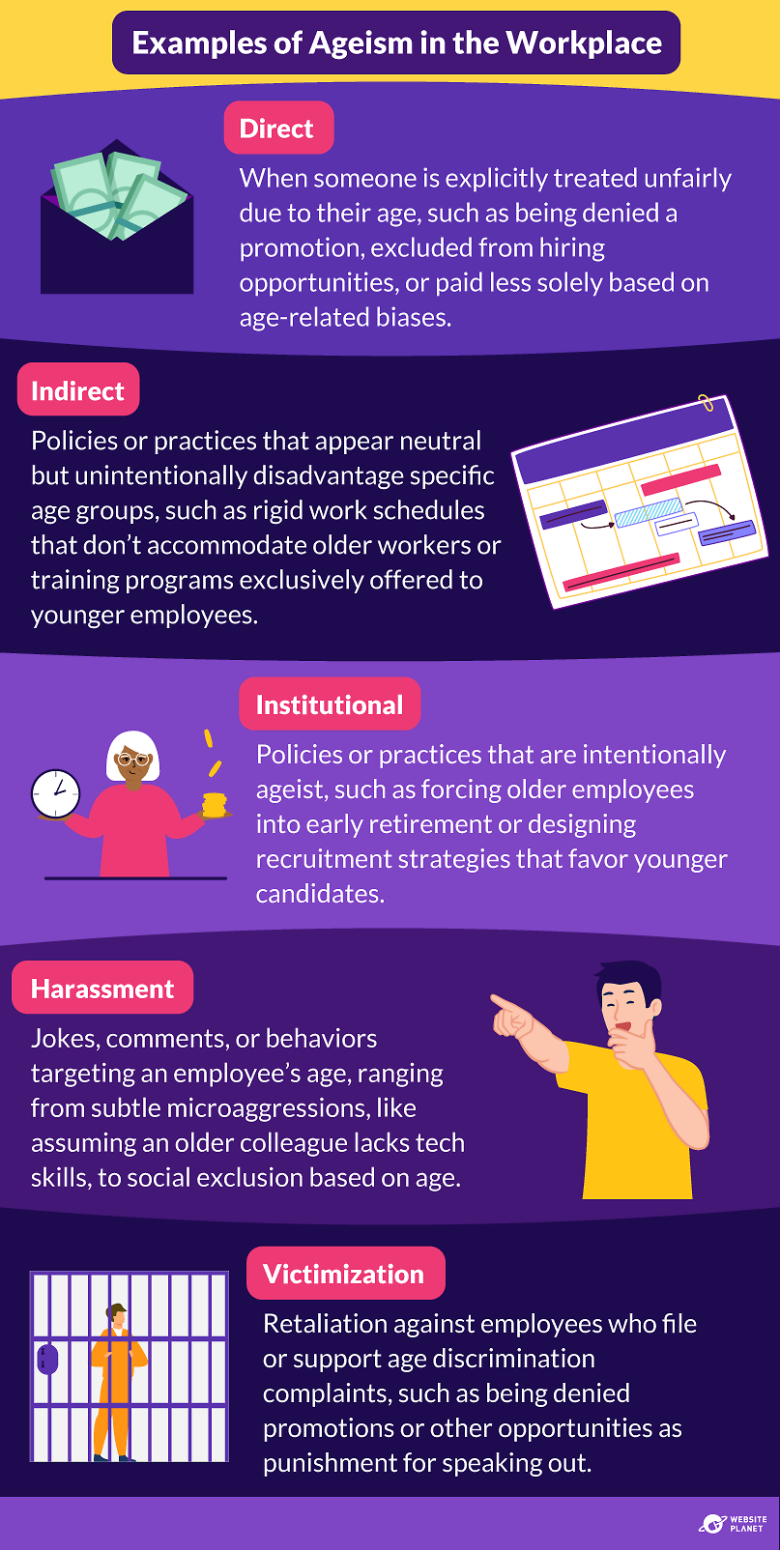
Impact of Ageism
Ageism in the workplace has widespread and damaging effects, impacting individuals, teams, and organizations. It intersects with other forms of bias, such as racism, sexism, and ableism, amplifying inequality and deepening its impact. For example, older workers of color, women, and those with disabilities often face compounded discrimination, limiting their opportunities and access to resources. Globally, 6.3 million cases of depression are attributed to ageism — these effects carry over into the workplace, harming employee well-being and performance.Effects on Employee Well-being
Ageism in the workplace affects employee well-being in many ways, from mental and physical health to relationships, job satisfaction, and career growth.Emotional and Mental Health
Workers subjected to ageism frequently experience anxiety, depression, and loss of confidence. A recent study found that 44% of workers report depression due to age discrimination, 36% experience anxiety, and 20% feel their self-worth is damaged. Internalizing negative stereotypes about aging can also worsen mental health, leading individuals to question their value and even impair cognitive abilities. The World Health Organization (WHO) estimates that ageism contributes to 6.3 million cases of depression worldwide.Physical Health Effects
According to the WHO, ageism-related stress can lead to unhealthy behaviors like poor eating, skipping medications, or increased substance use, which contribute to chronic health issues and shorter lifespans. A study in China found that older individuals prone to self-directed ageism had a nearly 20% higher risk of death over a six-year period compared to those with positive self perceptions. Similarly, a U.S. study found that older adults with positive age stereotypes were 44% more likely to fully recover from a severe disability than those with negative stereotypes.Social Effects and Damaged Relationships
Ageism can lead to social isolation and loneliness, with 45% of workers who experience ageism reporting these feelings. They may feel rejected by coworkers and withdraw from social events and workplace discussions. These divisions weaken collaboration, trust, and morale among teams. In highly competitive environments, ageism can lead to the formation of ingroups and outgroups. When older workers are perceived as weaker performers or less adaptable, they are often excluded from the group. This reduces information sharing and collaboration, further damaging workplace relationships.Lowered Job Satisfaction and Career Growth
Ageism creates an unfair and unwelcoming work environment. Older employees are often overlooked for promotions or training opportunities, which limits their career growth and adds to feelings of frustration. For example, 80% of workers who have experienced age discrimination say it has negatively impacted their career trajectory. Many workers lose motivation and satisfaction with their jobs, which affects their performance and commitment.Consequences for Workplace Culture and Productivity
Ageism’s effects ripple through entire organizations, undermining teamwork, innovation, and a company’s ability to retain top talent.Loss of Skills and Institutional Knowledge
When employees are undervalued or pushed out, businesses lose critical expertise. Older employees often hold “institutional knowledge” and understand the organization’s history and industry in ways that help teams navigate challenges — this knowledge is difficult to replace and essential for mentoring younger employees. For instance, older employees often excel at teaching soft skills like communication and problem-solving, while younger employees can bring fresh perspectives and an awareness of new trends. Without intergenerational collaboration, companies miss valuable opportunities for learning and development.Loss of Diverse Ideas
Age diversity brings a variety of perspectives and life experiences to the workplace, which fosters better decision-making and problem-solving. It also helps workplaces represent their customers and colleagues more effectively. A multigenerational workforce can better identify barriers, come up with creative solutions, and strengthen organizational culture through improved collaboration. When ageism is present, these benefits are lost. It narrows perspectives, reduces knowledge-sharing between generations, and creates a less inclusive culture, ultimately weakening the workplace.Damage to Workplace Culture
Age discrimination creates division between age groups, as employees may naturally self-select into cliques based on age. This weakens collaboration, reduces trust, and undermines morale. Workers of all ages may feel uncomfortable, undervalued, or even angry, resulting in higher turnover rates and declining productivity.Legal and Financial Consequences
Age discrimination is illegal in many countries, including the U.S., where federal laws like the Age Discrimination in Employment Act (enacted in 1967) protect employees from age-based discrimination in hiring, promotions, and other workplace decisions. Violating these laws can result in lawsuits, costly legal fees, and reputational damage. As mentioned earlier, a major pharmaceutical company was sued for under-hiring older workers after prioritizing “millennial” hiring goals.Age Discrimination Laws
Age discrimination laws are designed to protect employees from unfair treatment based on their age. While these laws vary worldwide, they typically protect employees from:- Unfair hiring practices, such as job ads excluding certain age groups.
- Workplace harassment, including age-related jokes or derogatory comments.
- Discrimination in promotions, pay, training, or benefits, ensuring fair opportunities for advancement.
- Forced retirement, unless an employer can justify it under specific circumstances.
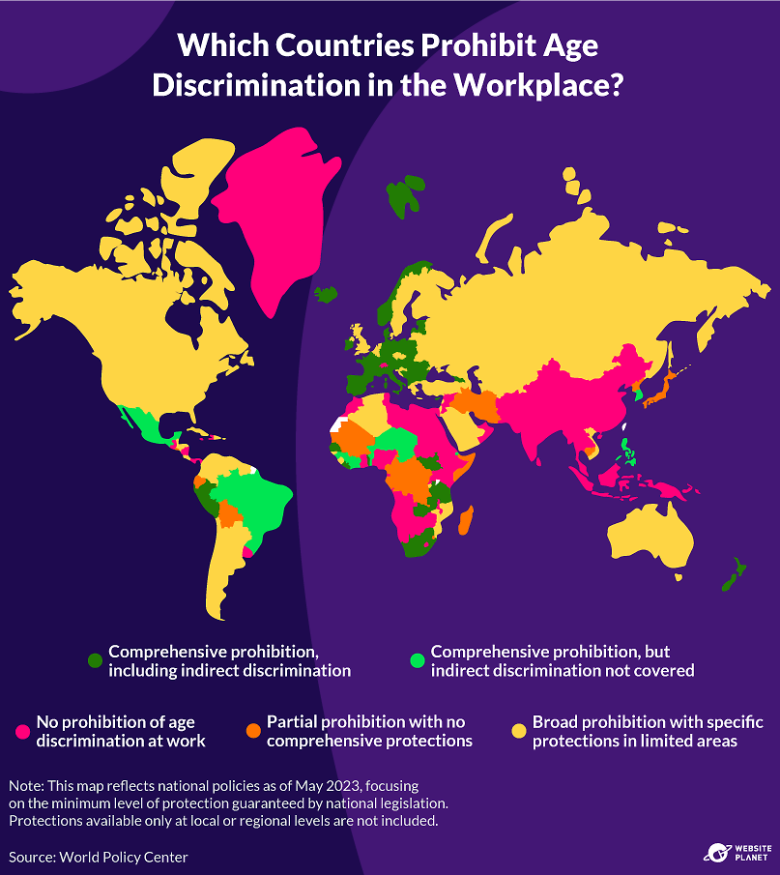
Key Laws and Protections
In this section, we’ll look at some of the key laws regarding age discrimination, including what they do well and what they lack.The Age Discrimination in Employment Act (ADEA) – United States
The ADEA, passed in 1967, protects workers aged 40 and older from discrimination in recruitment, hiring, promotions, pay, training, and termination. Under this law:- Job postings or ads cannot specify age preferences unless age is a “bona fide occupational qualification” (BFOQ) (see below).
- Harassment based on age, such as frequent offensive remarks, is prohibited.
- Retaliation against employees who report discrimination is illegal.
The Equality Act 2010 – United Kingdom
The Equality Act 2010 protects employees from unfair treatment based on nine protected characteristics, including age. Key protections include:- Prohibition of direct and indirect discrimination, harassment, and victimization in recruitment, pay, promotions, training, and dismissals.
- Age discrimination by perception (when someone is wrongly accused of belonging to a certain age group) or association (when someone is connected to a specific age group) is also unlawful.
Age Discrimination Act 2004 – Australia
Australia’s Age Discrimination Act 2004 bans age discrimination in all sectors, ensuring employees are treated fairly. The Act applies to:- Job advertisements, recruitment, and selection processes.
- Training, promotions, transfers, and terms of employment.
- Workplace conditions and termination.
Various Laws – The European Union
Since 2000, the EU has required member states to implement laws banning age discrimination in employment. Countries within the EU are required to ensure protections in:- Recruitment, including job advertisements and selection.
- Employment terms and conditions, promotions, and transfers.
- Training, professional development, and dismissals.
Global Gaps in Protections
While many countries have strong age discrimination laws, others lag behind. In Southeast Asia, the Philippines is the only country with explicit protections, while Singapore relies on voluntary guidelines, with 17% of workers reporting ageism — one of the highest rates in the Asia-Pacific region. In the Middle East, countries like Bahrain and Oman require employers to include an employee’s date of birth in contracts, essentially normalizing age-based discrimination in hiring and promotions. Even in Europe, protections vary by country. For example, Austria excludes workers in private-sector goods and services from its ageism laws, while Poland does not protect workers in higher education institutions. Globally, practices like creating job postings that specify age ranges and mandatory retirement policies are still common, reinforcing unequal treatment of workers based on their age.When Is Age Okay to Consider?
Not every decision involving age is discriminatory. In some jobs, age can be a legitimate factor when it directly impacts safety, performance, or operational needs. These cases fall under what is legally known as a bona fide occupational qualification (BFOQ).
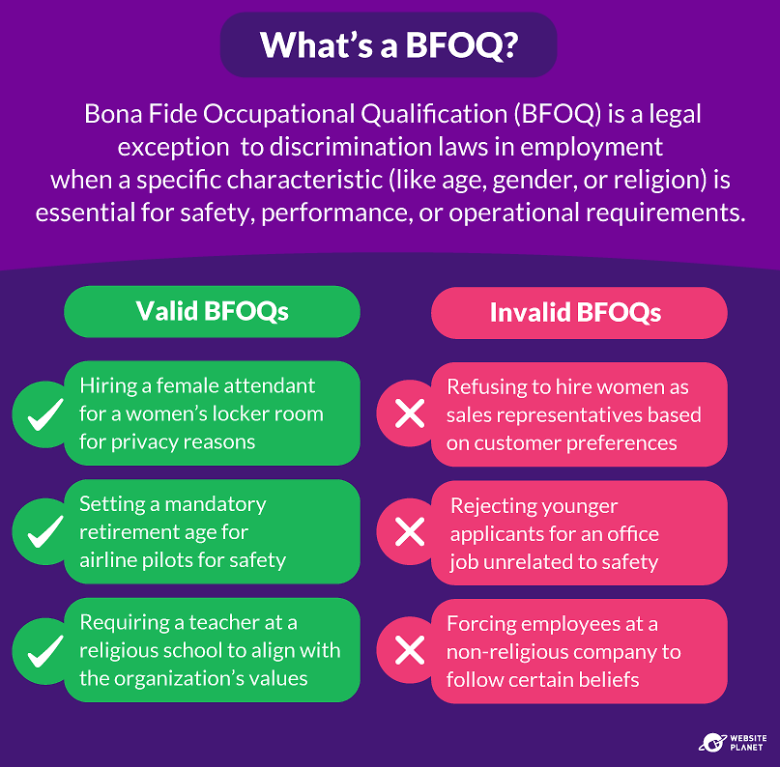 Certain jobs require mandatory retirement or age limits due to physical or cognitive demands. For example:
Certain jobs require mandatory retirement or age limits due to physical or cognitive demands. For example:- Pilots must retire by age 65 in the U.S. due to safety concerns related to health risks and cognitive decline, in line with international aviation standards.
- Air traffic controllers face a mandatory retirement age of 56, as the high-stress nature of the job increases burnout and risks.
- Firefighters often have age caps for retirement, typically around 57 for federal wildland firefighters, due to the physical intensity of the job.
- Police officers often have mandatory retirement ages or age restrictions for new recruits. However, some regions are seeing more inclusive hiring practices. In 2023, Texas passed a law removing the age cap for applicants pursuing careers in law enforcement.
- Military service enforces mandatory retirement ages, typically 62 or 64, depending on rank and service branch. This helps ensure that service members are ready for physically demanding tasks and allows for succession planning.
- Media and performing arts roles may legally require specific age groups, such as casting a child actor for a role in Oliver Twist.
How to Combat Ageism in the Workplace as an Employee
Ageism can undermine workplace fairness, but employees have the power to challenge it by fostering inclusivity, educating colleagues, and addressing discrimination. This section explores practical steps employees can take to combat ageism in the workplace, from challenging stereotypes to reporting discrimination effectively.1. Champion Inclusivity at Work
Inclusivity begins with treating colleagues of all ages with fairness and respect. Avoid making assumptions about someone’s abilities or preferences based on age. For example, don’t assume an older coworker isn’t interested in attending social events or that a younger team member lacks leadership potential. Push back on stereotypes by advocating for inclusive practices. Speak up if you hear ageist remarks or notice exclusion. For instance, language in job descriptions like “energetic” or “digital native” can unintentionally discourage older candidates. Support policies that address ageism. Engage with leadership or HR to advocate for equitable opportunities and raise awareness about how age bias impacts workplace dynamics.2. Learn Together and Grow as a Team
Research shows that intergenerational teams outperform less diverse teams on complex tasks. To foster collaboration, create opportunities for employees to work together on meaningful projects. Encourage mixed-age teams and intergenerational mentoring, where both older and younger employees can share perspectives and learn from each other. Mentorship programs promote learning and validate the experiences of older workers, fostering a sense of belonging and community while avoiding issues like gatekeeping. Participate in training sessions that mix age groups, too. Whether it’s learning a new tool or attending compliance workshops, these shared experiences strengthen relationships and bridge knowledge gaps. Those in leadership positions can help foster learning environments by encouraging continuous professional development for employees of all ages.3. Educate Yourself and Others About Ageism
Ageism in the workplace can often be subtle, like older employees being excluded from development opportunities or younger ones facing skepticism about their abilities. Learn to recognize these signs and challenge them when they happen to help create a more supportive work culture. Speak to colleagues from different age groups about their experiences to gain a broader perspective on how ageism happens. Use these discussions to identify biases and encourage open dialogue. For instance, if someone makes a joke about retirement or doubts a younger employee’s qualifications, explain how these types of remarks can create stereotypes. Share knowledge about workplace policies and laws, like the Age Discrimination in Employment Act (if based in the U.S.), to empower others to recognize and take action against discriminatory behavior.4. Talk to Your Employer
If you experience or witness ageism repeatedly, document the incidents and approach HR or management professionally. Keep track of details like dates, times, and individuals involved. For example, if an older colleague is consistently passed over for training, note these patterns as evidence. Propose actionable solutions, such as sensitivity training or equal access to mentorship programs. Advocate for policies that encourage open dialogue and accountability across all levels of the organization.5. Report Ageism
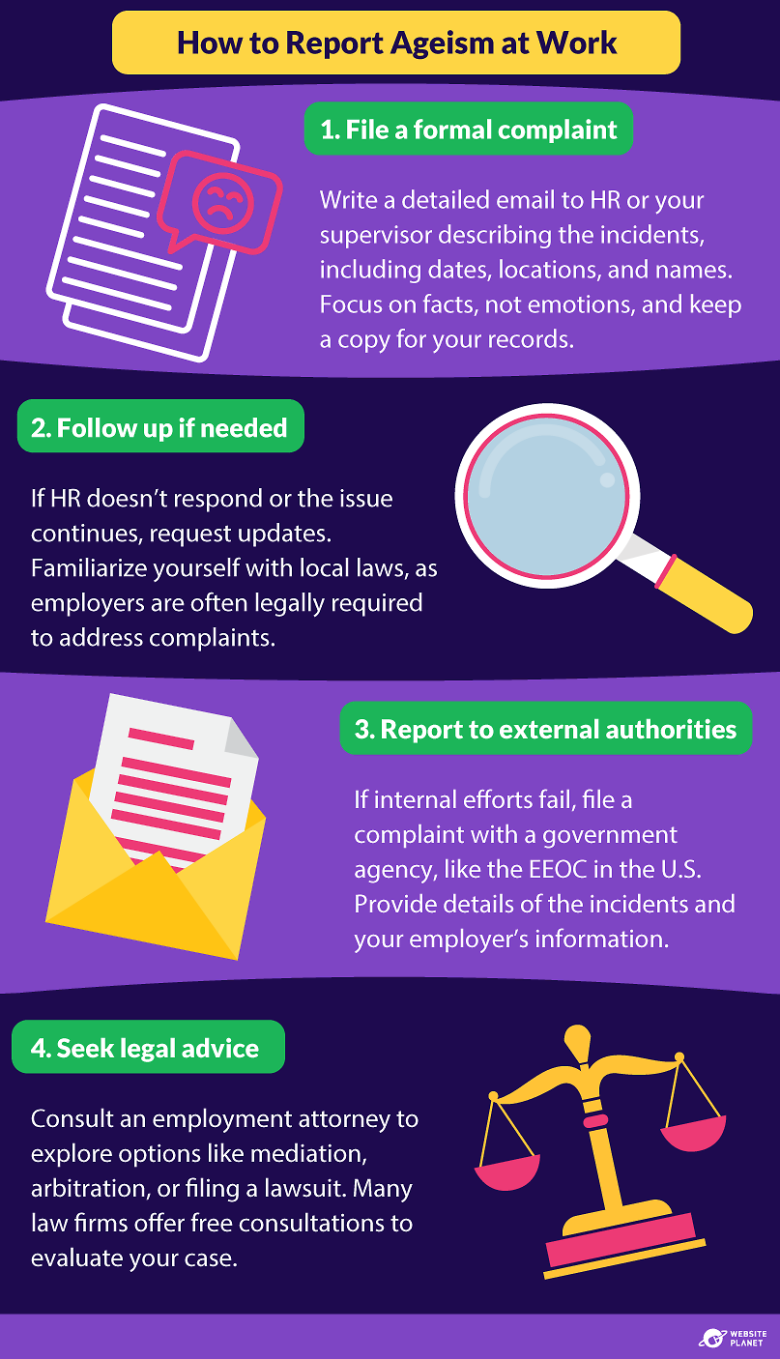 If you experience or observe ageism at work, act on it. Reporting age discrimination can lead to positive changes throughout the workplace and hold employers accountable under legal protections like the Age Discrimination in Employment Act (ADEA) in the U.S.
Start by addressing the issue informally. If possible, discuss your concerns directly with the people involved. If informal efforts fail, consider filing a formal complaint. Document incidents carefully, noting specific details such as dates, times, what was said or done, and the individuals involved.
For example:
If you experience or observe ageism at work, act on it. Reporting age discrimination can lead to positive changes throughout the workplace and hold employers accountable under legal protections like the Age Discrimination in Employment Act (ADEA) in the U.S.
Start by addressing the issue informally. If possible, discuss your concerns directly with the people involved. If informal efforts fail, consider filing a formal complaint. Document incidents carefully, noting specific details such as dates, times, what was said or done, and the individuals involved.
For example:- If you’re repeatedly excluded from training sessions or meetings while others are included, these patterns may indicate discrimination.
- Comments like “When are you planning to retire?” or pay discrepancies tied to age are clear signs to report.
“On [date], during a team meeting, I was excluded from discussions about training opportunities offered to other team members. I believe this exclusion is based on my age.”
Retain a copy of your complaint for your records, and consider sending a blind copy to a personal email for safekeeping. If HR does not respond or the issue persists, escalate the matter. Request updates on the status of your complaint and ensure your concerns are documented. In many countries, such as the U.S., employers are legally required to investigate and address complaints in good faith. Be sure to familiarize yourself with the specific laws and regulations in your country and region. If internal efforts fail, consider filing a complaint with a government agency. In the U.S., the Equal Employment Opportunity Commission (EEOC) handles age discrimination cases. Complaints must be filed within 180 days of the incident, or 300 days if state laws also apply. Be prepared to provide:
- Your contact details
- A summary of the incidents
- The employer’s name and address
How Organizations Can Tackle Ageism in the Workplace
To combat ageism in the workplace, organizations must address bias at every level, from hiring practices to team dynamics. The strategies outlined here focus on identifying signs of ageism, developing inclusive policies, and fostering intergenerational collaboration. With the right approach, companies can create an environment that values employees for their skills and contributions, regardless of age.Signs an Organization Has an Ageist Culture
Ageism can harm workplace fairness and morale. Here are some signs to watch for:- Unequal opportunities: Employees of certain age groups are passed over for promotions, training, or meaningful projects.
- Ageist recruitment practices: Job ads include terms like “recent graduate” or “digital native,” discouraging older applicants. Layoffs may target older workers unfairly instead of evaluating performance across all age groups.
- Exclusion from decisions: Employees of certain ages are left out of meetings or decision-making, suggesting their input is undervalued.
- Age-related remarks: Jokes or even comments about age, such as retirement plans or slower work speeds, create an uncomfortable atmosphere, whether intentional or not.
- Rigid policies: Lack of options like phased retirement or flexible schedules makes it harder for employees at different life stages to thrive.
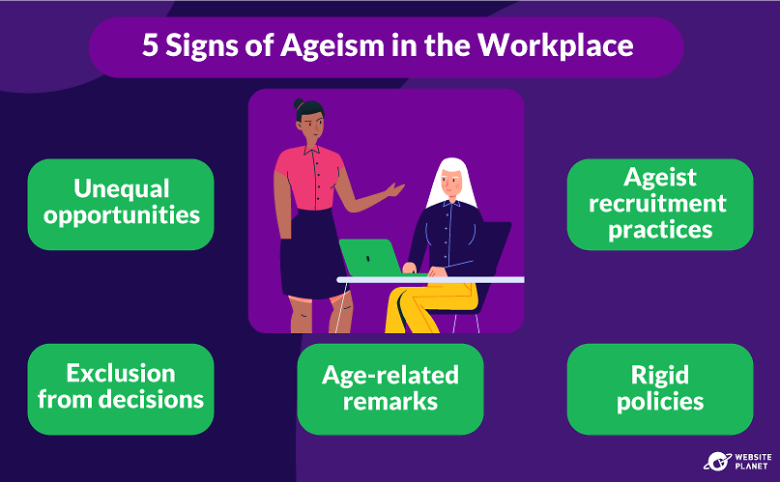
Steps to Creating Change for Employers
Ageism requires deliberate action. Below, we cover steps employers can take to create a more inclusive workplace.1. Assess the Organization for Ageism
Evaluate workplace processes and culture for fairness:- Review policies and practices: Examine hiring, promotion and training practices for potential age bias. Ensure decisions are based on skill and performance, not age.
- Gather feedback: Use anonymous surveys or focus groups to ask your employees about their experiences in the workplace.
- Examine leadership and teams: Assess how age-inclusive your teams are, from senior leadership to entry-level roles.
- Conduct well-being checks: Hold regular one-on-one meetings with employees to address concerns and gather ideas for improvement. Using structured questionnaires can help uncover patterns of exclusion.
2. Establish Anti-Ageism Policies and Practices
Develop policies that prevent discrimination and ensure equal treatment:- Define ageism: Clearly outline what ageism looks like in the workplace with concrete examples, like overlooking older employees for promotions or favoring younger candidates in job descriptions.
- Set up reporting procedures: Provide a transparent process for reporting ageism, ensuring employees feel safe raising concerns without fear of retaliation. Offer steps for escalation and resolution, including formal channels such as an anonymous reporting system or using dedicated hotlines used by third-party services.
- Revise HR practices: Ensure hiring, promotion, and evaluation processes are free from age bias. Remove unnecessary age indicators, like graduation years, from applications. Standardize criteria to focus on skills, experience, and performance.
- Review benefits packages: Offer comprehensive benefits that cater to employees of all ages. These may include retirement plans, healthcare options, elder care support, and wellness programs.
- Eliminate ageist language: Use inclusive terms in all company communications, like job postings and internal emails, to remove phrases that suggest age bias.
- Offer flexible work options: Provide flexible work arrangements including remote work opportunities, part-time schedules, or phased retirement plans to accommodate the needs of employees at different life stages.
- Promote professional development: Make training and development opportunities accessible to employees of all ages. Ensure equal access to programs that help employees stay current with industry trends.
- Encourage multigenerational collaboration: Create opportunities for employees of different age groups to work together, such as mentorship programs where employees can share knowledge, fostering mutual respect and understanding.
3. Education About Ageism
Training and communication help address biases:- Provide team training sessions: Offer training sessions to help staff identify and address age-related biases, stereotypes, and discriminatory behavior.
- Communicate anti-ageism policies: Make anti-ageism policies visible in meetings, handbooks, and internal platforms.
- Foster open dialogue: Create a safe environment where employees can openly discuss age-related issues to build mutual understanding.
4. Promote and Adopt Intergenerational Mentoring
Collaboration across age groups strengthens teams and fosters innovation:- Encourage mentorship: Pair younger and older employees together to share skills, experiences, and perspectives.
- Showcase diversity: Demonstrate how collaboration across age groups can improve innovation, problem-solving, and team performance.
- Facilitate teamwork: Create projects and provide opportunities for employees from different age groups to work together.
Resources for Combating Ageism
Combating ageism requires a mix of education, advocacy, and personal support. A number of organizations are dedicated to addressing age-related bias and improving workplace inclusivity. Whether you’re seeking to challenge systemic ageism or support individual mental health, these organizations provide tools, strategies, and actionable guidance to create a more equitable workplace.Support Organizations and Advocacy Groups
These organizations focus on addressing ageism, offering educational tools, advocacy guidance, and community engagement opportunities. They are ideal for individuals and organizations seeking to understand, prevent, or challenge age discrimination in the workplace and on a broader scale.- Ageism.org: Ageism.org provides educational tools to help individuals and organizations recognize and combat age discrimination. Its resources include guides on identifying ageist behavior and fostering inclusive workplace cultures. It highlights the effects of ageism on all age groups, from children to older adults, and offers actionable strategies like holding open conversations about age bias.
- The National Center to Reframe Aging: The National Center to Reframe Aging focuses on shifting societal perceptions of aging by promoting equity and inclusivity and providing tools and communication strategies to address biases. Led by the Gerontological Society of America, the Center influences policies that support individuals as they age and works to ensure that aging is seen as a natural part of life.
- Old School: Old School curates free resources to help individuals and organizations understand and fight ageism. Its online library includes advocacy tools, educational content, and spaces for collaboration among global age advocates. Old School’s goal is to create a world where age does not limit opportunities or experiences.
- SAGE: SAGE supports LGBTQ+ older adults by addressing their unique challenges in healthcare, housing, and workplace inclusion. They advocate for fair treatment and provide training and resources to improve understanding of the intersection between aging and LGBTQ+ identity. SAGE’s work ensures that LGBTQ+ seniors can live with dignity and access the same opportunities as others.
- Global Campaign to Combat Ageism: The World Health Organization’s Global Campaign to Combat Ageism (#AWorld4AllAges) provides tools and evidence-based strategies to challenge age bias. It focuses on policy reform, education, and fostering intergenerational connections. Resources include guides on implementing intergenerational activities and promoting age-inclusive communication.
- Centre for Ageing Better: The Centre for Ageing Better is a UK-based organization that works to reduce inequalities in aging by advocating for inclusive workplaces, homes, and communities. It provides practical resources, including a guide for employers on recruiting and retaining older workers. This guide includes actionable steps on supporting health at work and helping mid-life employees plan for their future.
- AARP (American Association of Retired Persons): AARP offers extensive resources to combat workplace age discrimination. Its services include a job board, resume advisory tools, and guidance on handling age bias. Through its Employer Pledge Program, AARP encourages businesses to commit to age diversity.
- Age UK: Age UK envisions a world where everyone can enjoy later life. It provides work and learning resources on workplace rights, combating age discrimination, and managing redundancy. It also provides IT training courses for older adults, other skill-building classes, and information on education including joining the University of the Third Age (U3A), which fosters lifelong learning and community engagement.
Mental Health and Support Resources
These organizations provide resources that address mental health, including actionable strategies, training, and self-help guides tailored to age-related challenges. They are particularly helpful for employees and employers looking to improve workplace wellness, manage stress, and create inclusive environments.- Mental Health America (MHA): Mental Health America’s Workplace Wellness Resource Center supports employees and employers by prioritizing mental health in the workplace. It offers a number of resources and strategies for dealing with common workplace stressors, creating a supportive workplace, and working with a mental illness.
- HelpGuide.org: HelpGuide provides accessible advice on improving mental health and well-being. Its resources include a guide on ageism and age discrimination with practical tips for dealing with ageism in the workplace. HelpGuide’s broader offerings cover online therapy options and self-help techniques for stress and emotional health.
- Mind UK: Mind UK supports mental health through free resources, advice, and local services. Its workplace materials address stress, burnout, and overall well-being. Mind UK offers downloadable guides, e-booklets, and Wellness Action Plans, which help employees and managers create tailored mental health strategies.
- American Psychological Association (APA): The APA’s Committee on Aging hosts initiatives like the Psychologists Against Ageism webinar series, which tackles ageism in psychology and beyond. These webinars offer research-based insights into the impact of ageism and strategies for addressing it. The APA’s efforts aim to reshape societal narratives around aging and enhance the health and inclusion of older adults.
Final Thoughts
Ageism in the workplace is a challenge that impacts employees, employers, and organizational culture as a whole. This article explored its profound effects, the legal protections available, and actionable strategies to combat it—whether you’re facing bias at work or are an employer wanting to foster inclusivity. By recognizing the signs of ageism, educating yourself, and implementing inclusive policies and practices, workplaces can become environments where employees of all ages thrive. The solutions discussed — championing collaboration, ensuring equal opportunities, and prioritizing education — can help break down stereotypes and build stronger, more innovative teams. Now is the time to act. Be bold in challenging outdated norms and creating spaces where everyone feels valued. Your actions can help shift how we view age in professional settings. Together, we can create workplaces that embrace diversity, celebrate unique perspectives, and drive progress for all.Content attribution: Website Planet is the sole owner of the visual and written content on this website. You are free to share our content and visuals on your site, but we ask that you provide a link back to the resource if you do, enabling us to continue providing authoritative reviews and guides to help individuals and businesses thrive online.
